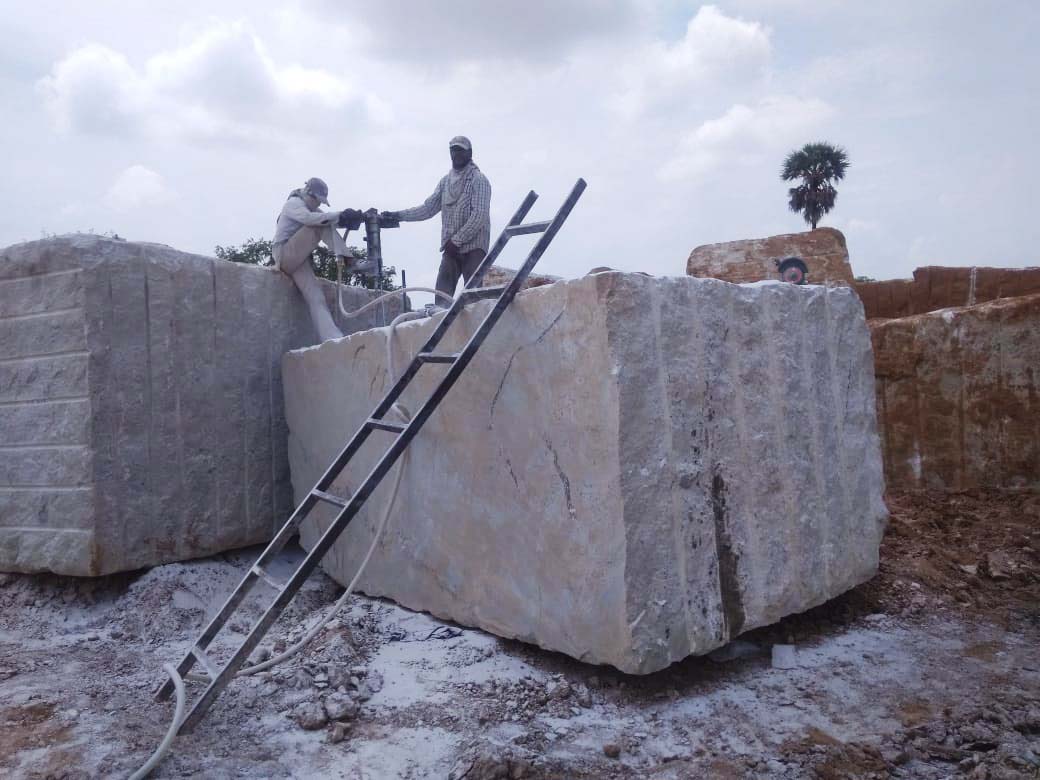Opening Natural Prizes: Granite Quarries in South Africa Revealed
Opening Natural Prizes: Granite Quarries in South Africa Revealed
Blog Article
Unveiling the Mysteries of Granite Quarrying: Where Toughness and Style Meet
The world of granite quarrying is a realm where the raw stamina of nature merges with human virtuosity to create frameworks that stand the examination of time with an air of style. From the midsts of quarries to the precise polishing in workshops, the process of changing granite right into building wonders is a complicated dancing of practice and advancement. As we peer into the depths of this old craft, we begin to discover the covert complexities that shape the extremely significance of our constructed setting.
The Beginnings of Granite Quarrying
In the annals of architectural history, the beginnings of granite quarrying are shrouded in a tapestry of old craftsmanship and geological wonders. Dating back to old Egypt and Mesopotamia, the removal of granite from quarries marked the start of a trip that would ultimately lead to the development of several of the world's most legendary structures.
Granite quarrying's origins can be mapped to the competent artisans that recognized the stone's resilience and visual appeal. Via a mix of primitive tools and large resolution, these very early quarry employees discovered granite blocks that would end up being the building blocks of civilizations.
As civilizations evolved, so did the strategies of quarrying granite. The Romans, renowned for their design expertise, developed advanced approaches for removing granite to construct monoliths, holy places, and roads that stood the examination of time.
The legacy of these ancient quarrying methods proceeds to shape modern design, with granite continuing to be a symbol of toughness and elegance in building projects around the world. (granite quarries in south africa)
Devices of the Quarrying Trade
The development of granite quarrying methods from old worlds to contemporary times highlights the essential duty played by the devices of the quarrying sell shaping the sector's techniques. In ancient times, quarrying devices were primary, often containing chisels, hammers, and wedges made from products like bronze or iron. These devices required substantial manpower and time to extract granite obstructs from quarries.

Furthermore, the introduction of pneumatic devices and high-powered machinery has dramatically lowered the physical labor required in quarrying procedures, improving worker safety and security and productivity. As the quarrying industry proceeds to introduce, the tools of the trade stay at the forefront of driving development and forming the future of granite removal.
Drawing Out Blocks of Granite
Utilizing precision equipment and advanced strategies, the removal of granite blocks from quarries has become an innovative procedure in the modern quarrying market. The preliminary action includes identifying the place and size of the granite down payment to determine one of the most reliable extraction technique. As soon as an appropriate website is selected, the removal process begins with the drilling of holes for the placement of nitroglycerins. Controlled blasting methods are then used to break apart the granite into manageable areas.

Sprucing Up and Ending Up Techniques
To attain a flawless surface area on granite blocks, experienced artisans employ a series of precise sprucing up and ending up methods. After the first extraction and forming procedures, the granite obstructs undergo a complete polishing Full Report phase to improve their all-natural appeal and durability.
In enhancement to polishing, finishing techniques are related to additional improve the granite's look. These techniques might include flaming, refining, or cleaning, each offering unique structures and finishes to suit different aesthetic choices. Flaming, as an example, entails exposing the granite surface area to heats to produce a harsh, distinctive finish, suitable for outdoor applications where slip-resistance is necessary. Honing, on the other hand, offers a matte surface that is smooth to the touch, excellent for indoor kitchen counters and flooring. By carefully picking and using these polishing and completing techniques, artisans can transform raw granite obstructs into exquisite items that showcase both toughness and style.

Ecological Influence and Sustainability
With the growing focus on environmental consciousness in the market, try this granite quarrying techniques are significantly scrutinized for their influence on natural deposits and long-term sustainability. Quarrying for granite can have substantial environmental effects. The removal process commonly entails making use of heavy equipment, dynamites, and large quantities of water, causing habitat devastation, soil erosion, and water air pollution. Furthermore, the transportation of granite from quarries to refining facilities creates carbon discharges, even more adding to environmental deterioration. granite quarries in south africa.
To alleviate these influences and make certain sustainability in granite quarrying, industry stakeholders are adopting numerous actions. Implementing advanced innovations to lower power consumption and water use, recovering quarried land for environmental restoration, and advertising responsible sourcing techniques are some methods being used. Accreditations such as the Woodland Stewardship Council (FSC) and the Management in Power and Environmental Design Related Site (LEED) help consumers determine ecologically pleasant granite items.
Conclusion
In verdict, granite quarrying is a process that calls for specialized tools and methods to essence blocks of granite and polish them to a high degree of finish. While the environmental effect of quarrying can be substantial, initiatives are being made to enhance sustainability techniques in the market. In general, granite quarrying is a delicate balance between utilizing the stamina and style of this all-natural rock while lessening its effect on the environment.
Report this page